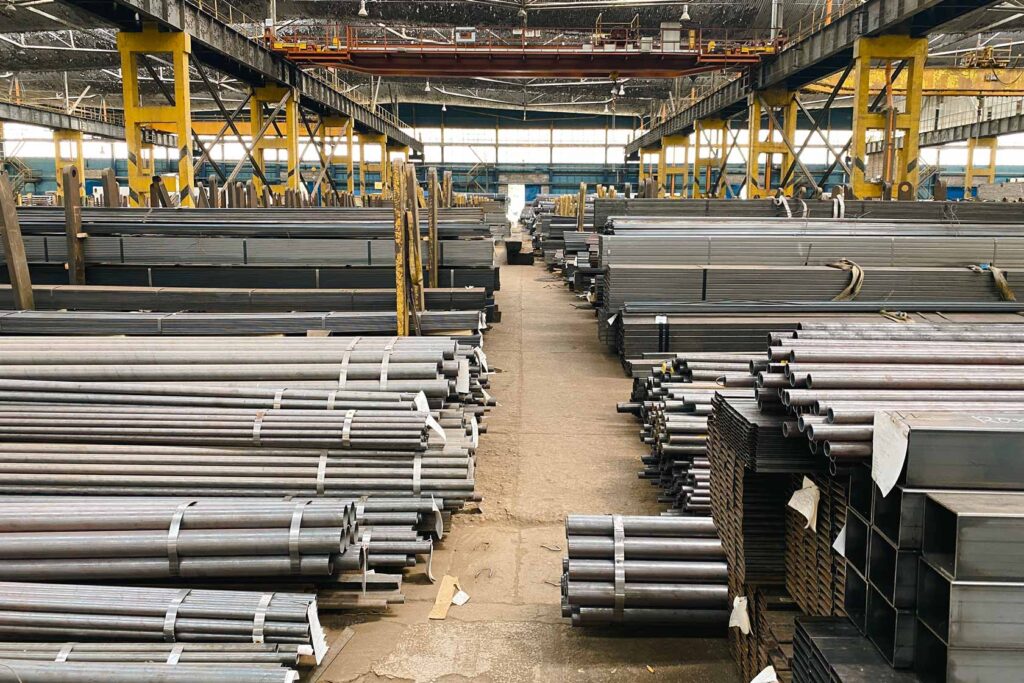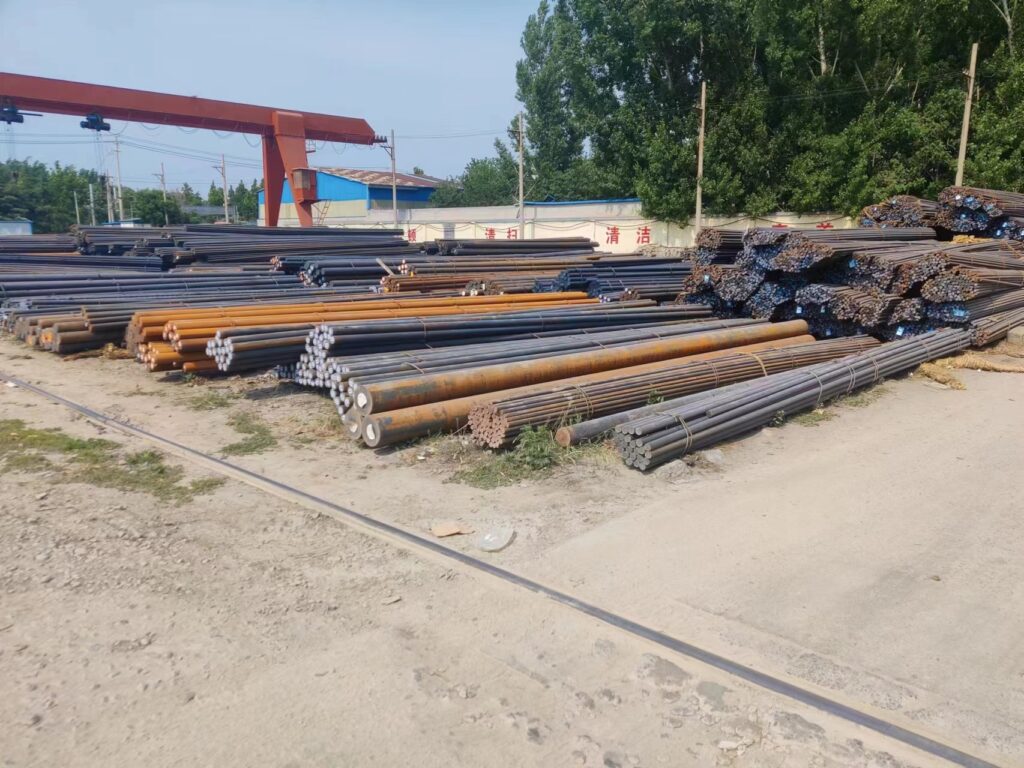Steel is one of the most versatile and durable materials known to mankind. It has been used for centuries, from building structures to making tools and weapons. Its strength, resilience, and durability have made it a cornerstone in various industries. If you are curious about the properties and applications of this remarkable material, then you’ve come to the right place! In this blog post, we’ll explore everything you need to know about steel – its different types, properties that make it so unique, how it’s used in various industries around the world – so let’s get started! And if you’re looking for quality steel stock for your projects don’t worry because we’ve got all the information on that too!

What is steel?
Steel is an alloy made of iron and typically containing small amounts of carbon, manganese, silicon, sulfur, and phosphorus. The addition of these elements gives steel its unique properties that make it so useful in various applications.
The amount of carbon present in steel determines its strength and hardness. Low-carbon steels are softer and more ductile while high-carbon steels are harder and stronger but less malleable.
There are many different types of steel depending on the composition, such as stainless steel which contains chromium to resist corrosion or tool steel designed for cutting tools due to its exceptional hardness.
The process used to manufacture the steel can also affect its properties – some common methods include hot rolling, cold drawing or forging. These processes alter the microstructure of the material which ultimately affects its mechanical properties.
What makes this material truly remarkable is how versatile it is – from construction materials like beams or pipes to automotive components like frames or engines – every industry relies on this wonder metal!
The different types of steel
Steel is a versatile and highly useful material that can be found in many different forms. There are several types of steel available, each with its own unique blend of properties and characteristics.
One common type of steel is carbon steel, which is made by mixing iron with carbon. Carbon steel can be further divided into low-carbon steel, medium-carbon steel, and high-carbon steel, each with different levels of strength and toughness.
Another popular type of steel is stainless steel, which contains chromium and other elements to resist corrosion. Stainless steel comes in various grades depending on the amount and type of alloying elements added during manufacturing.
Tool steels are another category used for making cutting tools such as knives or drill bits. They have high hardness and wear resistance due to their composition containing tungsten or molybdenum.
There are also specialty steels like electrical steels used in transformers or silicon steels for motor cores that have specific electrical properties required for certain applications.
Understanding the different types of Steel – from their properties to applications- will help users select the best option for their projects depending on specific requirements such as strength needed or environmental conditions faced.
The properties of steel
Steel is a widely used metal that has a variety of properties that make it useful in many applications. One of the most significant properties of steel is its strength. Steel is incredibly strong and can withstand high levels of stress and strain without breaking or deforming.
Another important property of steel is its durability. Steel can resist wear, tear, and corrosion for longer periods than other metals like aluminum or copper. Its durability makes it an ideal choice for construction materials such as beams, pipes, and scaffolding.
Steel also has excellent heat conductivity which makes it perfect for use in cooking utensils like pots and pans. This property helps to distribute the heat evenly throughout the material ensuring food cooks uniformly.
Additionally, steel has good ductility which means it can be stretched out without breaking or cracking easily. This property makes steel suitable for use in manufacturing products such as wires.
One more essential attribute of steel worth mentioning is its magnetic quality – some types are ferromagnetic while others aren’t at all magnetic- this characteristic makes them valuable when constructing electric motors or generators.
These unique qualities make steel one of the most versatile and sought-after materials worldwide with varied uses across multiple industries from engineering to medicine to construction!
The applications of steel
Steel is a versatile material that has been used in numerous applications for centuries. One of the most common uses of steel is in construction, where it is used to build everything from skyscrapers to bridges and tunnels. The strength and durability of steel make it an ideal choice for these types of projects.
Another major application of steel is in the automotive industry. Steel is used extensively in the manufacturing of cars, trucks, buses, and other vehicles due to its ability to withstand high temperatures and harsh environments. In addition to its strength, steel’s lightweight nature makes it a popular choice for car manufacturers looking to improve fuel efficiency.
The energy industry also relies heavily on steel. Oil rigs, pipelines, and power plants all use various types of steel components because they are strong enough to handle extreme weather conditions while also being corrosion-resistant.
In addition to these industries, steel has many other applications as well. It’s commonly used in household appliances such as refrigerators and stoves due to its heat resistance properties. Steel also plays a vital role in manufacturing tools like hammers and saws because it can be shaped into different forms easily.
The versatility of steel makes it one of the most important materials across multiple industries worldwide – making “steel stock” an integral part when creating or building infrastructures that people rely on every day.

How to work with steel
Working with steel can be intimidating, but it doesn’t have to be. Whether you’re welding, cutting or shaping steel, there are a few things you should keep in mind to ensure your safety and produce quality work.
Firstly, make sure you have the right tools for the job. Steel requires specialized equipment such as an angle grinder or plasma cutter. Additionally, personal protective gear is essential when handling steel. Wear gloves and eye protection at all times to avoid injury.
Before any work begins on the steel itself, ensure that it’s clean and free of any rust or debris. This will help prevent contamination during welding or other processes.
When working with steel using heat-based methods like welding or brazing, take care not to overheat the material as this can cause warping and weaken its structural integrity. It’s also important to follow proper ventilation procedures when working with these methods.
Take special care when cutting through thick pieces of steel as they may shift unexpectedly during cuts due to their weight and density.
By following these tips and taking necessary precautions while working with steel stock, anyone can successfully create durable structures out of this versatile material.
Conclusion
To sum it up, steel is an incredibly versatile and valuable material that has revolutionized many industries. From construction to manufacturing, its strength and durability make it a go-to choice for engineers and designers.
With so many different types of steel available with unique properties, there’s no shortage of applications for this amazing material. And by learning how to work with it properly, you can unlock even more possibilities.
Whether you’re looking to build something new or improve on an existing design, steel stock is a must-have resource. So the next time you have a project in mind, consider the benefits of using this remarkable material – your results might just surprise you!
